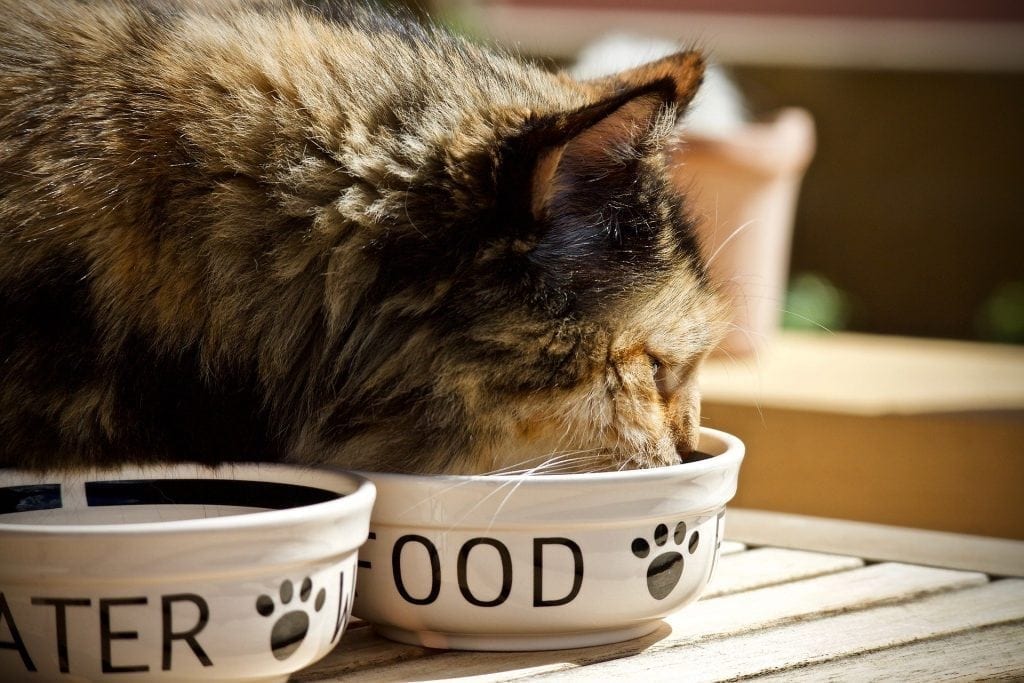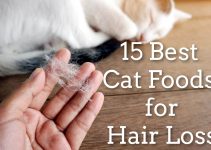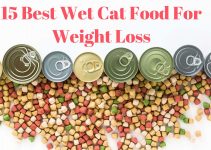When getting a new cat, we all like to treat it the best way possible, giving it the best food, the best quality litter box sand, the most delicious snacks, and providing it with an excellent quality life.
Cats are carnivores, so they consume mostly meat in their diet since it is an excellent source of protein. In 1960, pet food was introduced, however, in the 1980s, dry cat food became highly demanded in the pet food industry. People started adopting this new product and adding it to their cat’s diet, nowadays, a large number of people feed their cat dry cat food and include it as most part of their diets.
Others may even use dry cat food as the only element in their cat’s diet. As we know, fresh and raw food goes bad, but is it the same case for dry cat food? And does dry cat food go bad as fast as fresh food? This is what we will cover in this article.
NOTE: We want to inform our blog readers that before we publish any article the team “Proudcatowners” Do deep research based on experience and knowledge about cat’s and everything related to them, to guarantees reliable and precise information, satisfy the readers is our first priority
What is dry cat food made of
If you go shopping for dry cat food, you will find so many brands to choose from, the aisle that has that food is filled with names, but before deciding on the right one to choose, have you ever wondered what they are made of?
Ingredients:
Dry cat food contains a set of ingredients, and each pet food company has its own recipe. However, they must all comply with the rules of the AAFCO (Association of American Feed Control Officials).
All foods must be balanced, nutritious, and provide a complete diet. But the main ingredients are the following:
- Protein sources (beef, chicken, eggs)
- Brewers rice
- Carbohydrate fillers
- Corn (Gluten meal)
- Whole grain corn
- Fats and oils
- Preservatives
- Additives
- Minerals
- Added vitamins
- Amino acids (Taurine)
How is dry cat food made?
The process of mixing these elements and making dry cat food is usually done through baking or extrusion. Here are the steps followed:
-
Mixing the ingredients:
The first step in making dry cat food is grinding all the ingredients and mixing them. Water is added to the mix carefully, in the right proportions, to create a dough.
-
Preparation:
Once this dough is ready, it is put into a machine called the expander.
The product is carefully prepared with steam, in this step, some companies choose to add hydrolyzed proteins, these later are called digest, and they are natural ingredients that were blended and prepared.
They are used to add flavor to the final product, and they make the taste more enjoyable for cats.
-
Cooking the dough:
In this process, the dough is cooked and pressurized. After that, it is extruded through the machine, cut and puffed, to come out as the final product we desire.
This step is the most important one in the entire process of production, and it needs to be handled with extreme care, the heat needs to be controlled, and the product must be checked for 100% safety.
-
Drying:
At this phase, the final product is also known as “kibbles” is put into an oven to get rid of extra moisture that was left in it.
-
Spraying:
This step is also known as the coating. The kibbles are sprayed and covered with other materials, such as fats, oils, vitamins, and minerals.
The mentioned additives give a delicious flavor to the kibbles, to ensure that cats would not reject them, and would enjoy having them for a meal.
These kibbles are then left to dry out, then they are carefully packed in the right portions, and shipped in boxes, to the pet food isles you shop from.
What is the difference between dry cat food and wet/canned cat food?
Both dry and wet cat food are very beneficial and nutritious for your cat. However, they have some remarkable differences.
- Dry cat food has only 10 to 12 % of moisture, while wet cat food has 75 to 78 % of moisture content.
- Dry cat food is usually cheaper than canned cat food of the same nutritious quality.
- Many people argue that dry cat food is more convenient than canned cat food, especially when it comes to cleaning up and storage.
- Dry cat food has more carbohydrates, while wet cat food has more fats.
Is dry cat food better for my cat than canned cat food?
Many people argue that dry cat food is better for their cat. However, many veterinarians have confirmed that both dry and canned food are suitable for your cat.
Some brands of dry cat food designed their product, especially to help with cleaning the cat’s teeth and enhance their oral health.
Many veterinarians encourage mixing both kinds of food into your cat’s diet, which means to give your cat both dry and canned food on separate occasions, to give them an experience of the best of both worlds.
Pros and Cons of dry cat food:
When does dry cat food expire?
The date is different from one brand to another, but it is a fact, dry cat food does expire. Usually, dry cat food lasts for 6 months, and it is known that dry cat food can be considered party food for cats for an average period of up to 6 months.
If you genuinely love your paw friend, then having the presence of mind to read the expiration date before feeding your furry partner is mandatory.
On each box, there usually a “Best by” or “use by” expression stamped with a date next to it, almost always it says 6 months after the production date.
For those of you who tend to forget reading the expiration date mentioned on the bag/box (usually stamped on the bottom of it), you can trust your cat’s instinct on this.
The human nose is indeed good for detecting if food is fresh or spoiled, but our paw friend’s capacity for smelling if food is safe or not is powerful beyond ours.
Cats would not eat food that is not safe for them unless the little furry pal is starving. If a cat eats, it means it is edible. However, be careful of your cat shows any symptoms afterward.
Consume before Vs. Best before:
If you get confused between “Best before” and “Consume before,” here is a quick explanation to differentiate between the two:
Best before:
This mentioned concerns about the food’s quality. If the food was consumed after a given date, the food’s quality would decline and would not be as good as it used to be the first time your cat has consumed it.
Dry cat food is made out of preservatives that try to keep its quality intact, and through time, these preservatives lose some degree of their performance, which means food’s nutrients are lost.
Consume before:
This mentioned concerns about the food’s edibility, which is strictly a safety concern, not a quality one. As mentioned above, it is usually 6 months after the production date.
If that food is consumed beyond that date, it would probably have negative repercussions on your cat and can cause severe health issues. It is better to avoid these mistakes and be very careful with the expiration date.
Does dry cat food go bad?
Yes, all kinds of food do go bad after a specific date, and dry cat food is not different.
Though some say it can last from 3 months to 3 years, if the time exceeds the “Best by” date stamped on your cat’s food box, it is becoming less fresh and less nutritious.
Even though added antioxidants and other additives are supposed to make it fresh, dry cat food still loses its quality gradually after the “Best By” date.
If your cat’s food has reached its expiration date, which is also written on the box, usually 6 months after the production date, it is no longer safe to feed it to your cat.
You might have some left, and you consider feeding to your cat a couple of days after the expiration date, but you are highly advised not to do so.
How do I store dry cat food properly?
It is true that dry cat food is relatively easy to store, and does not cause you much trouble, however, if you do not store it properly, you will be compromising the food’s quality, especially after you open the bag.
Even though the “Best by” date indicates when the food is best consumed before, it changed after you open the bag and expose the food the outer elements, which cues the oxidation process to begin.
The three major factors that have an impact on the nutritional quality of your pet’s food are the following: Moisture, air, and high temperature.
Here are some guidelines to properly store your cat’s food, keep it fresh, and prevent it from losing its nutritious benefits:
Store food in dry non-humid places and have with cool temperature:
The temperature where you keep your dry cat food should not exceed 38 Celsius, and this would prevent the destruction of vitamins. If the food is kept in a place of higher temperature for more than two days, it will lead to the fast degradation of vitamins.
Keeping your cat’s food in a dry place would also prevent the oxidation of fatty acids. Keeping your cat’s food in a humid place would cause moisture inside the bag, which would lead to mold.
Try to preserve the food’s original packaging bag for storage:
Pet food companies put a lot of effort into making those packaging bags, and it is for a good reason. Usually, most original dry food bags are made perfectly to prevent air and moisture from ruining the product, as well as protection from high temperatures and preserve the unique flavor of the food.
When you open the bag the first time, try to do so gently so you can close it again for another use each time, and keep your cat’s food safe.
Pet food companies, alongside with the FDA, advise pet parents to seal the bag, either by rolling both sides and holding it with a clip or by putting it in an airtight container for extra safety.
Another importance of the original food bag is that it contains all the information you might need about the product, including the expiration date.
Use airtight containers:
In case you did not save the original bag of your cat’s dry food, store it in an airtight container. Keeping it there would protect it from insects, air, moisture, as well as preserve the freshness, taste, and even the smell of it.
Another tip you could use is keeping the label that contains the information concerning the product, and stick it to the container you chose to empty the kibbles in.
Always remember to change and update it each time you refill that container with a new product.
Always clean your container:
Many people tend just to refill the container with dry pet food after it runs out without washing it first, this is a huge mistake and can make your cat’s food go bad even faster.
Once the food is consumed, and the container is almost empty or fully emptied, there are still oil leftovers inside it from the old kibbles.
These later make the container greasy and would affect and contaminate your new fresh kibbles, therefore, before you refill any container of dry cat food, make sure you properly wash and clean it.
Using soap is a great way to get rid of greasy leftovers. Make sure you dry it very well before you refill it because any drops of water or humidity left there will affect the fresh food you will put inside.
Your cat is not shy to get some special dinner by itself:
When storing the cat food, make sure you do this in a place where your cat can not reach. Cats will try to get some snacks on their own, and will most likely ruin the bag, and end up spilling the kibbles all over the place, exposing those kibbles this way to all outer elements you were trying to protect them from.
For how long can I store dry cat food?
The best time frame in which you can store your cat’s dry food is 6 months because that is when it is still fresh and fully nutritious. After the “Best By” date stamped on the bag, which is usually up to six months, the food becomes less fresh and can go bad very quickly.
How can I soften my cat’s dry food before I serve it?

Adding some water to your cat’s kibbles before serving it is an effective way to softening them, add only ¼ cup of clean water to them, then put them in the microwave from 7 to 15 seconds.
It is advised to warm cat food before serving it. In the case of kibbles, adding water then microwaving them is very helpful in rendering them soft. Make sure you check the kibbles’ temperature before serving them to your cat to make sure they are not too hot for its mouth.
Softening your cat’s kibbles can also be beneficial with preventing dehydration due to dry cat food.
Mixing some canned cat food with dry cat food can also help with enhancing moisture, as well as flavor. However, make sure you consult your veterinarian first about mixing both kinds for a complete diet for your cat before doing so.
Softening your cat’s kibbles before serving them helps especially with its dental and oral health if your cat is aging. If it lost some teeth, or if it is avoiding to eat dry food, consider softening the kibbles for it, and consult your veterinarian concerning this.
How much dry cat food can I serve to my cat?
There is no exact answer to this question since the quantity of food you serve your cat depends on various factor:
- Age
- Weight
- Size
- Health condition
- Metabolic rate
- Amount of exercise and movement your cat does
In addition to that, the same quantity of different foods contains different levels of nutritious elements. On each dry food bag, there is usually a “this amount per day” or “this amount per meal” guidance.
According to Dr. Jennifer Coates from PetMED, you should reassess your cat’s condition every two weeks or so to check their body condition and change the amount you are feeding them according to that, and she gave the following information about meals according to the cat’s weight:
- If the cat weighs 2.3 kg (5lb), it should be fed 30g to 40g per day.
- If the cat weighs 4.5 kg (10lb), it should be fed 45g to 65g per day.
- If the cat weighs 6.8 kg (15lb), it should be fed 65g to 95g per day.
Conclusion:
Most dry cat food is made by the same machines that are used to make breakfast cereals. Kibbles contain very shallow levels of moisture and are very easy to store, clean, and they are even helpful for your cat’s dental and oral health.
Dry cat food is advised to be consumed 6 months after the production date because, after that, it becomes less fresh.
When buying dry cat food, it is best to keep the original bag for storing it after using it, because pet food companies made those bags to preserve the quality of the food at its best. However, if you end up throwing away the original bag, and choose to use other ways of storing your cat’s food, make sure you use airtight containers, to keep air and moister out, and to preserve those containers in a cool temperature place.
Before refilling them, you must clean them and dry them very thoroughly before putting fresh kibbles in them. Softening those kibbles before serving them to your cat using water and also heating them is helpful for your cat, especially if it is old.
The quantity of food to serve for your cat depends on different factors, including the age and the size. Make sure you consider that, reassess your cat’s condition each time in case you need to change to diet and add or reduce the quality you are feeding it, and of course, to check in with your veterinarian each time.




